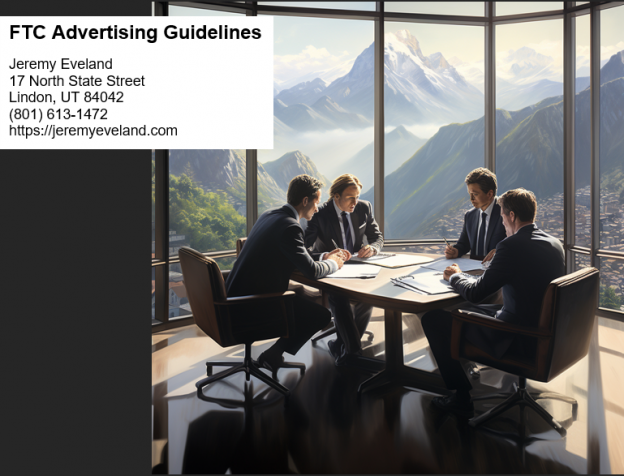In today’s digital age, social media has become an integral part of our lives. It offers a vast platform for businesses to reach their target audience and promote their products or services. However, with the increasing use of social media for advertising purposes, it is crucial for businesses to understand the importance of incorporating disclaimers into their online marketing strategies. These disclaimers serve as a legal safeguard, ensuring compliance with advertising regulations and protecting both businesses and consumers. In this article, we will explore the significance of social media advertising disclaimers and provide valuable insights into how businesses can effectively utilize them to avoid potential legal pitfalls. Additionally, we will address some frequently asked questions surrounding this topic, providing concise answers for better clarity. By the end of this article, you will have a comprehensive understanding of social media advertising disclaimers, empowering you to make informed decisions for your business’s online presence.
Why Social Media Advertising Disclaimers are Important
In the age of social media, advertising has become increasingly prevalent and influential. As businesses take advantage of the power of social media to reach their target audience, it is crucial to understand the importance of social media advertising disclaimers. These disclaimers play a key role in providing transparency, ensuring legal compliance, and protecting businesses from potential liabilities. Understanding the role of disclaimers in social media advertising is essential for any business seeking to make its mark in the digital landscape.
Understanding the Role of Disclaimers in Social Media Advertising
Social media advertising disclaimers serve the purpose of disclosing important information to the audience. They provide clarification and transparency about the nature of the content being promoted, ensuring that users are aware of any potential commercial interests involved. By including disclaimers, businesses can build trust with their audience, maintain transparency in their advertising efforts, and avoid misleading their followers.

The Legal Implications of Social Media Advertising
Social media advertising is not exempt from legal considerations. In fact, failing to comply with legal requirements can have severe consequences for businesses. Federal Trade Commission (FTC) guidelines, as well as regulations imposed by social media platforms, dictate the need for disclaimers in certain situations. Non-compliance can result in investigations, penalties, reputational risks, and even lawsuits. It is crucial for businesses to understand and adhere to the legal implications surrounding social media advertising to protect themselves from such consequences.
Protecting Your Business with Social Media Advertising Disclaimers
By including social media advertising disclaimers, businesses can protect themselves from potential legal liabilities and safeguard their reputation. These disclaimers act as a shield, demonstrating a commitment to transparency and compliance with legal requirements. It is important for businesses to prioritize the implementation of clear and effective social media advertising disclaimers to mitigate risks and protect their brand and interests.

When to Include Social Media Advertising Disclaimers
Social media advertising disclaimers should be incorporated in various scenarios to ensure compliance and transparency. Here are some situations where including disclaimers is essential:
In Paid Social Media Advertising
When businesses pay for social media ad placements, it is vital to include disclaimers to disclose the commercial nature of the content. This serves to avoid any potential confusion or deception regarding the sponsored nature of the advertisement.
In Influencer Marketing Campaigns
Influencer marketing has become a popular advertising strategy. However, it is crucial for businesses to ensure that influencers disclose their relationships with the advertised products or services. Including disclaimers in influencer campaigns helps prevent misleading endorsements and ensures transparency between the influencer, the brand, and the audience.
In User-Generated Content
User-generated content (UGC) refers to content created by social media users that promotes or references a specific product or brand. Businesses should encourage users to include disclaimers when sharing UGC that involves their products or services. This helps maintain transparency and clarifies that the content is not an official endorsement by the business.
In Promotions and Contests
When running promotions or contests on social media platforms, businesses should include disclaimers to clarify any eligibility criteria or entry requirements. These disclaimers help prevent misunderstandings and ensure that participants are aware of the terms and conditions of the promotion or contest.
In Sponsored Posts
When businesses collaborate with social media influencers or content creators to promote their products or services, it is essential to include disclaimers in the sponsored posts. Clear disclosure of the sponsored nature of the content helps maintain transparency and informs the audience about the commercial relationship.
In Affiliate Marketing
Affiliate marketing involves promoting products or services through affiliate links and receiving a commission for each sale made through those links. Including disclaimers in affiliate marketing content is necessary to disclose the financial interest and ensure transparency with the audience.
Legal Requirements for Social Media Advertising Disclaimers
To ensure compliance and avoid potential legal consequences, businesses must understand the legal requirements surrounding social media advertising disclaimers. Here are some key aspects to consider:
FTC Guidelines for Proper Disclosure
The FTC has established guidelines to regulate advertising practices and protect consumers from deceptive advertising. According to these guidelines, businesses must clearly disclose any material connections between themselves and the endorsers or influencers promoting their products or services. Failure to comply with FTC guidelines can result in investigations, penalties, and harm to a business’s reputation.
Regulations by Social Media Platforms
In addition to FTC guidelines, social media platforms have their own regulations regarding advertising practices. These platforms often require businesses and influencers to clearly disclose any sponsored or paid content. It is essential to familiarize yourself with the specific requirements of each platform to ensure compliance.
Applicable Laws and Regulations
Apart from FTC guidelines and platform regulations, businesses must also consider other applicable laws and regulations, such as data protection and privacy laws. These laws may govern the collection and use of personal information obtained through social media advertising. Understanding and complying with these laws is crucial for businesses to protect the privacy and rights of their audience.
Elements of a Clear and Effective Social Media Advertising Disclaimer
A well-crafted social media advertising disclaimer should possess the following elements to ensure clarity and effectiveness:
Location and Placement
Disclaimers should be prominently displayed and easily noticeable within the content. Placing the disclaimer near the beginning of a post or using visual cues, such as borders or different font styles, can help draw attention to the disclaimer.
Language and Clarity
Disclaimers should use clear and concise language that is easily understandable for the average reader. Avoid using technical jargon or complex sentences that may confuse or mislead the audience.
Readability and Font Size
To ensure readability, disclaimers should be presented in a legible font size and style. They should not be difficult to read, especially on mobile platforms where users may be viewing content on smaller screens.
Unambiguous Terminology
Disclaimers should use unambiguous terminology to clearly convey the nature of the content. Avoid using vague or misleading phrases that may confuse or mislead the audience about the commercial relationship or the nature of the endorsement.
Common Mistakes to Avoid in Social Media Advertising Disclaimers
While understanding what to include in social media advertising disclaimers is important, it is equally crucial to avoid common mistakes that can render disclaimers ineffective. Here are some mistakes to avoid:
Using Vague or Confusing Language
Disclaimers should be straightforward and easy to understand. Using ambiguous or confusing language can lead to misinterpretation and defeat the purpose of the disclaimer.
Burying the Disclaimer in the Post
Hiding the disclaimer within a lengthy text or burying it at the end of a post can make it less noticeable to the audience. Disclaimers should be placed prominently so that they are easily seen and understood.
Failing to Disclose Material Connections
Disclosing material connections between businesses and endorsers is a crucial aspect of social media advertising. Failing to disclose such connections can be misleading and may result in legal consequences.
Omitting Important Information
Disclaimers should include all necessary information to provide full disclosure to the audience. Omitting critical details, such as the nature of the commercial relationship or any specific terms and conditions, can render the disclaimer ineffective.
Relying on Generic Disclaimers
Using generic disclaimers that do not specifically address the content being promoted can be misleading and insufficient. Disclaimers should be tailored to the specific advertisement to provide accurate information to the audience.

Enforcement and Consequences of Inadequate Disclaimers
The consequences of inadequate or non-compliant social media advertising disclaimers can have detrimental effects on businesses. Here are some potential enforcement actions and consequences:
FTC Investigations and Penalties
If the FTC determines that a business has engaged in deceptive advertising practices by failing to include proper disclaimers, they may initiate investigations. The FTC has the authority to impose significant fines and monetary penalties on businesses found to be in violation of their guidelines.
Consumer Trust and Reputation Risks
Misleading or deceptive advertising can harm a business’s reputation and erode consumer trust. In today’s digital age, negative feedback and public scrutiny can spread quickly, potentially leading to a loss of customers and damaged brand reputation.
Legal Liabilities and Lawsuits
Failure to comply with legal requirements and adequately disclose material connections in social media advertising can expose businesses to lawsuits. Consumers who feel deceived or misled by the advertising may file legal claims seeking compensation and damages.
Best Practices for Social Media Advertising Disclaimers
To ensure the effectiveness and compliance of social media advertising disclaimers, businesses should follow these best practices:
Clearly Labeling Sponsored Content
When collaborating with influencers or creating sponsored posts, clearly label the content as “sponsored” or “advertisement.” This provides transparency and ensures that users can distinguish between organic and promotional content.
Using Hashtags and Disclosures
The use of specific hashtags, such as #ad or #sponsored, alongside the content being promoted can help convey the commercial nature of the post. In addition, including a clear disclosure statement, such as “This is a sponsored post,” further reinforces transparency.
Making Disclaimers Stand Out
Disclaimers should be prominently displayed and distinguishable from the rest of the content. Using visual cues, such as borders or different font styles, can help draw attention to the disclaimer.
Staying Up-to-Date with Regulations
As social media platforms and legal requirements continue to evolve, it is essential for businesses to stay informed about any changes or updates. Regularly review and update disclaimers to ensure compliance with current regulations and guidelines.
How to Draft an Effective Social Media Advertising Disclaimer
Drafting an effective social media advertising disclaimer requires careful consideration of the specific business needs and legal requirements. Here’s a step-by-step guide to help:
Consulting with an Advertising Law Attorney
Seeking guidance from an attorney with expertise in advertising law can provide valuable insights and ensure compliance with relevant regulations. They can help businesses understand the specific legal requirements and draft disclaimers tailored to their unique circumstances.
Analyzing Specific Business Needs
Consider the goals, target audience, and products or services being advertised. Understanding these factors will help determine the necessary elements and language to include in the disclaimer.
Tailoring the Disclaimer to Each Platform
Different social media platforms may have specific requirements for disclaimers. Tailor the disclaimer to comply with the unique guidelines and regulations of each platform where the advertising will take place.
Including All Necessary Information
Ensure that the disclaimer includes all necessary information to provide full and accurate disclosure to the audience. Material connections, terms and conditions, and any other relevant details should be clearly stated.
Case Studies: Successful Social Media Advertising Disclaimers
Examining successful social media advertising disclaimers can provide inspiration and insights for businesses aiming to create effective and compliant disclaimers. Here are three case studies showcasing different approaches:
Brand A: Transparency and Authenticity
Brand A effectively uses disclaimers to show transparency and authenticity in their social media advertising. They clearly label sponsored content, collaborate with influencers who genuinely align with their brand, and include detailed disclosures about the nature of the commercial relationship. This level of transparency has resulted in increased trust and loyalty from their audience.
Brand B: Creative and Engaging Disclaimers
Brand B takes a creative approach to their disclaimers by using engaging visuals and relatable language. They acknowledge the sponsored nature of the content in a light-hearted and genuine way, making their disclaimers more appealing and likely to be noticed and understood by their audience.
Brand C: Ensuring Compliance with FTC Guidelines
Brand C prioritizes compliance with FTC guidelines by strictly adhering to the required disclosure language and format. They consistently place their disclaimers in easily visible locations within their posts, never leaving room for ambiguity or confusion. This commitment to compliance has helped them avoid legal repercussions and maintain a trustworthy brand image.
Frequently Asked Questions about Social Media Advertising Disclaimers
Here are some frequently asked questions about social media advertising disclaimers:
What is the purpose of a social media advertising disclaimer?
The purpose of a social media advertising disclaimer is to provide transparency and disclose any material connections, commercial relationships, or sponsored content in digital advertisements. Disclaimers ensure that audiences are aware of the promotional or paid nature of the content they are viewing.
Are there any legal requirements for social media advertising disclaimers?
Yes, there are legal requirements for social media advertising disclaimers. The FTC has guidelines that businesses must follow to ensure compliance and transparency. Social media platforms also impose their own regulations regarding the disclosure of sponsored content.
What are the consequences of not including a disclaimer in social media advertising?
Not including a disclaimer in social media advertising can have serious consequences for businesses. It can lead to investigations, penalties, reputational risks, and even lawsuits. Non-disclosure or inadequate disclaimers can harm a business’s reputation and erode consumer trust.
How can I make sure my disclaimer is effective and compliant?
To ensure effectiveness and compliance, businesses should make sure their disclaimers are prominently displayed, use clear and understandable language, and disclose all necessary information. Staying up-to-date with regulations, consulting with an attorney, and tailoring disclaimers to each platform are also important steps.
Do social media platforms have their own regulations for disclaimers?
Yes, social media platforms have their own regulations for disclaimers. These platforms often require businesses and influencers to clearly disclose any sponsored or paid content. It is crucial for businesses to familiarize themselves with the specific requirements of each platform they use for advertising.


































